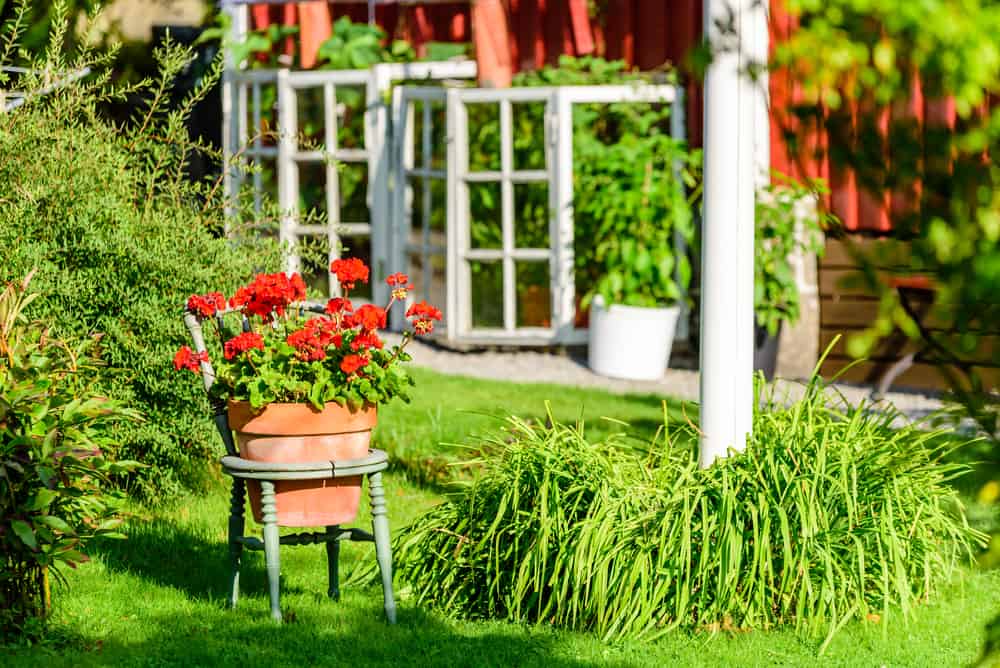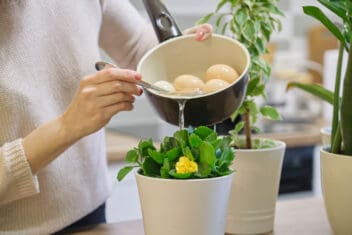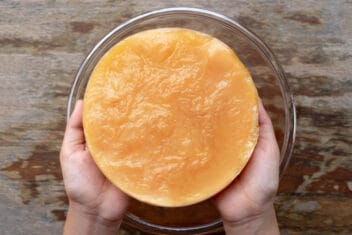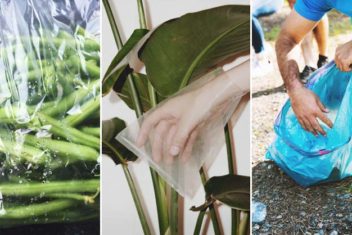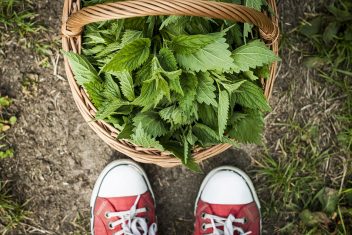Homesteaders know that self-sufficiency isn’t just about growing food or raising livestock. It’s also about taking full advantage of everything available to us and making things last as long as possible.
In addition to mending broken or torn items to extend their lives, repurposing broken or worn-out pieces is invaluable for reducing waste. Furthermore, it’s a great way to stretch creative muscles.
Below are 15 ways to repurpose items you may find around your homestead.
Broken Items
Everything breaks eventually, and homesteading life can be particularly rough on our items. Here are a few ways to repurpose used-up, broken, or worn-out items that would otherwise end up in landfill.
1. Wood Pallet Fencing

If you have wood pallets lying around from hardware or furniture delivery, put them to good use as garden fencing! They’re tall enough to keep smaller animals out of your vegetable beds, but low enough to see or climb over fairly easily as needed.
Repurposing wood pallets can also come in the form of:
- Compost containers
- Wood storage bins
- Outdoor furniture
- Planters
If you don’t have enough pallets to complete your project, you can often find them for free if you look at online marketplaces or watch for signs in industrial areas. Once you have your pallets, visit our guide to learn how to build your fence.
2. Broken Rake Tool Holder
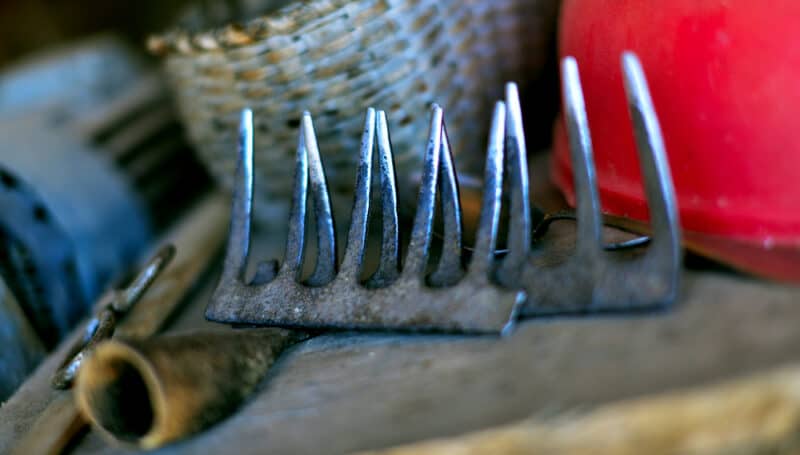
If the head snaps off your rake, don’t sweat it! Simply use a hammer or mallet to curl the tine ends slightly upward, then hang the rake head on your shed or workshop wall. Each tine is a perfect hook for hanging smaller tools such as trowels, snips, work gloves, etc.
3. Vehicle Wheel or Tire Mini Gardens
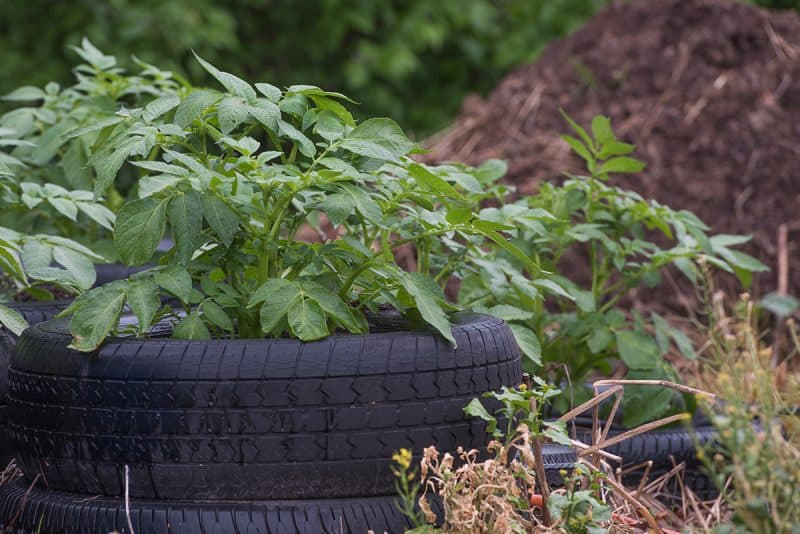
If you have broken bicycle wheels or car tires that are no longer usable, you can use them to create mini gardens around the property. Use car tires to separate individual species or stack them to create raised planters for flowers, fruit bushes, and more.
This kind of repurposing can be done with wagon or other spoked wheels as well! Plant a different culinary or medicinal herb in every spoked sector, or make ombre patterns with low-growing flower species.
If you’ve never tried a potato tire tower, you’re missing out.
Speaking of mini gardens:
4. Raised Beds from Broken Wheelbarrows
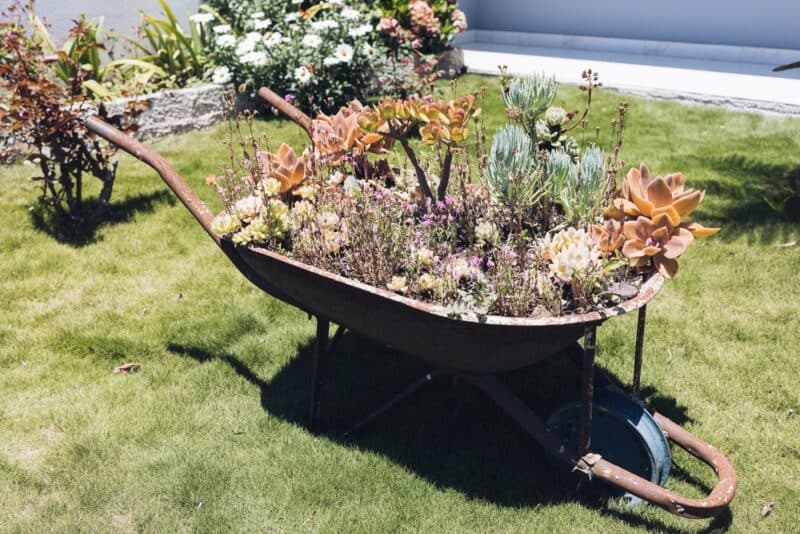
Although wheelbarrows last a good, long time, they can break after a while. We’re not talking about wheels or frames either, but the actual beds. This happened to us after an old wheelbarrow got flung around by a hurricane a few years back.
The wheelbarrow was picked up, hit the driveway at a weird angle, and developed a severe crack. We transformed it into a raised bed for herbs near the kitchen door, as that crack was perfect for drainage.
5. Used Window Cold Frames
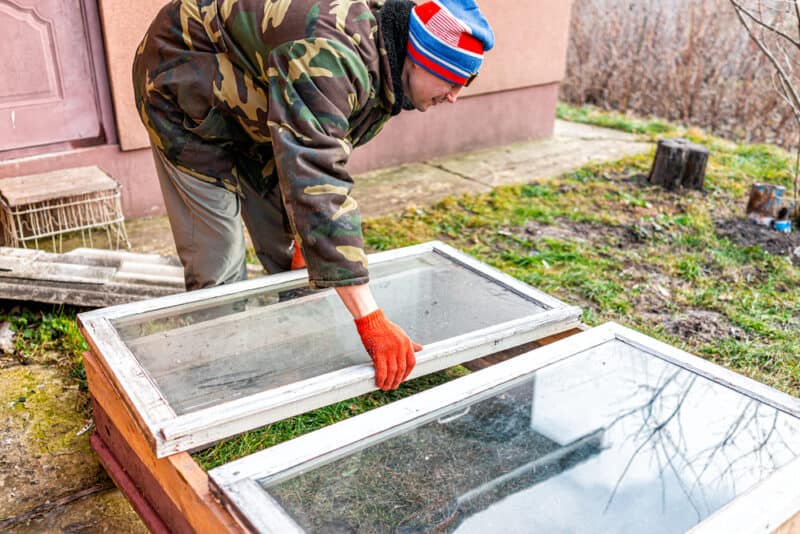
If you replace old windows with new ones, but the old ones are still in decent shape, try repurposing them as cold frames or mini-greenhouses. Simply add hinges and attach them to raised beds or growing boxes to create perfect enclosures to protect delicate plant species.
On a similar note:
6. Used Door Outhouse or Potting Shed
If you have (or find) four doors, you can put together an outhouse or small shed fairly quickly. Create a frame with some 2×4 boards, screw three doors into place to create the little room, then attach the final door with some hinges.
Add a roof of your choosing, and you have a perfect little shed. Then it’s up to you whether you add shelves to use it as a potting place, or a toilet seat to use it as a potty.
7. Outdoor Fire Pit from a Used Washing Machine Drum
If your washing machine gives up the ghost, consider repurposing it into an outdoor fire pit or grill. You’ll need to remove any plastic parts from it, but then you’re free and clear to use it for bonfires or s’more making.
Additionally, if you have a grill that you can pop onto, you also have an impromptu BBQ.
8. Cloth Bag Potato Planters
Reusable shopping bags are fantastic for reducing plastic waste, but they eventually wear out—especially on the bottom. Once they do, you can flex your repurposing muscles and reuse them to grow potatoes.
9. Paper Made from Clothing Scraps
Did you know that cotton, linen, and hemp cloth can be transformed into paper? Those jeans you’ve torn past the point of mending or the cotton PJs your kids have worn threadbare can have new life quickly and easily.
10. Copper Wire Jewellery and Crafts
If you have electronic equipment such as stereos that are broken beyond repair, strip the copper wire out of them. Then use it to create wire-wrapped jewelry, or for other small electronic projects that require small amounts of copper.
11. Make New Yarn from Old Knits
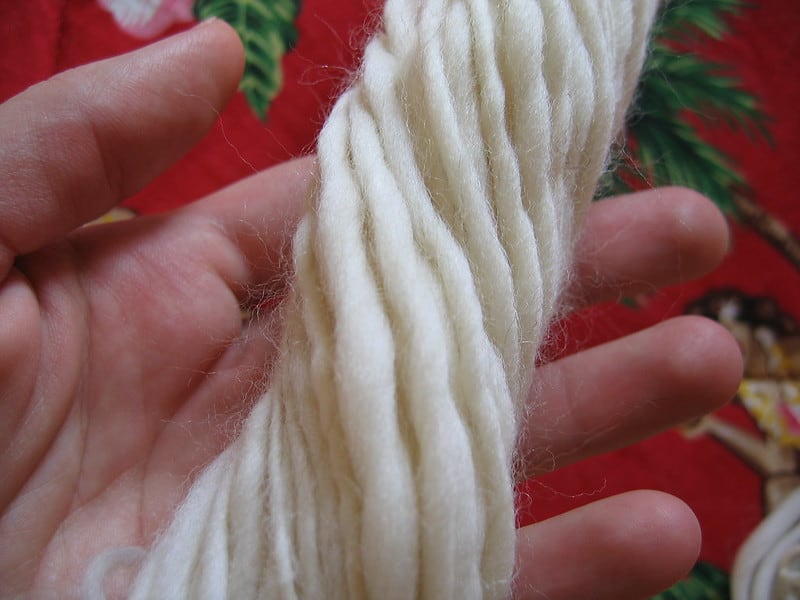
Do you have woolen sweaters, hats, or other knitwear that’s holey or worn through? Well, you can break them down into new yarn for repurposing.
If possible, unravel the piece as best you can into loose yarn. If that isn’t an option, grab a sharp pair of scissors and cut everything into strips or large pieces. Then use a pair of wool carders to pull the fibers apart until you have a pile of fluff where there was once a knitted garment.
Keep using the carders to eliminate any knots or lumps in the fiber, and then roll the carded segments into roving lengths. Use a drop spindle or spinning wheel to create new yarn in whatever thickness you like, be that a single ply or several strands plied together.
Once you’ve processed the repurposed fiber into new yarn, you can use it for whatever project(s) you can dream up. Knit or crochet with it, felt it, weave it: the sky is the limit here.
Recycling
This section is about repurposing items that would otherwise go into the recycle bin.
12. Pickle Brine

Depending on the type of pickles you’ve made, you can get quite creative with your culinary repurposing.
My nan used to make pickled beets all the time, and when she had fished the last beet out of the jar, she put peeled, hard-boiled eggs into the brine for a couple of days. That practice pickled those eggs nicely while also turning them a stunning shade of pink (ideal to stuff for Easter brunch).
Then, once those eggs had been taken out, the brine was also used to dye handkerchiefs or undershirts pink as well.
If you have leftover brine from dill pickles, you can add new cucumber or carrot slices into it for quick “fridge pickles”. These need a few days to cure in the brine and will only last a couple of weeks in the fridge, but are a tasty way to use things up well!
13. Cardboard Weed Barriers
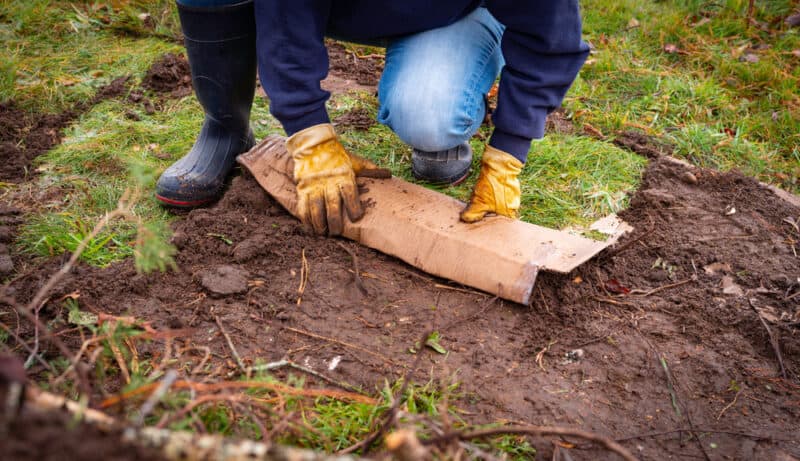
All of those cardboard boxes you get from Amazon or other delivery services can be used to block weeds in your garden. As long as they’re undyed, you just need to strip off any plastic or tape, then spread them around your property to smother weeds.
Then top them with organic materials like straw, leaves, compost, and soil to make a “lasagna” garden.
Now you can plant vegetables, herbs, or fruit bushes to your heart’s content without contending with invasive weeds!
14. Upside-Down Soda Bottle Planters
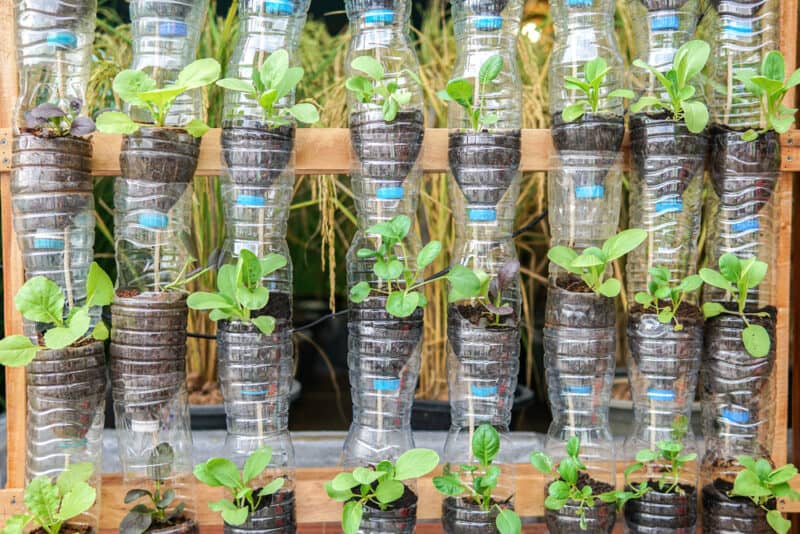
If your family drinks soda from 2L bottles, keep the empties from the recycling bin and try repurposing them into planters instead! Simply cut the bottoms off, flip them upside-down, and line them with insulating sheeting (like emergency reflective blanket material).
Then ease an edible or medicinal plant through the opening head first, cover the roots with soil and compost, and hang in a sunny spot. This works remarkably well for cherry tomatoes, hot peppers, and various herbs.
Alternatively, if you don’t want to grow food or flowers in these bottles, use them protectively instead:
15. Soda Bottle Cloches
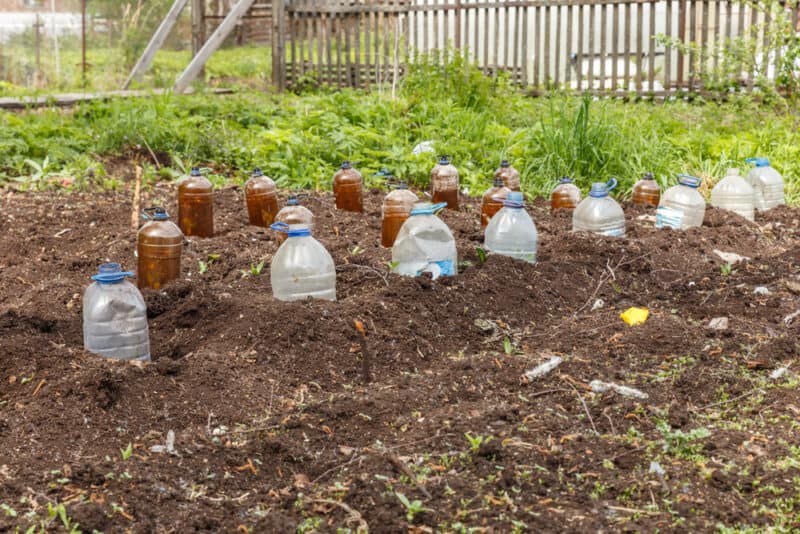
Cut the bottoms off soda bottles and pop them over vulnerable seedlings, especially during inclement weather. A sudden unexpected frost or hailstorm can annihilate tender plants, which can be devastating if you’re growing crops to feed your family.
Push the impromptu cover into the soil to keep it in place, and unless you’re dealing with gale-force winds, they should keep your plant babies safe.
Get Creative!
There really is no limit to the ways you can reuse things on your property. Hardly anything needs to go to waste. An old chair can be turned into a potted plant holder, boots can become planters, windows create a unique fence, and turn old clothes into quilts.
Cut open those endless feedbags, stitch them together, and you have a DIY tarp.
Before you throw anything away, you should take a good hard look at it and decide if it truly needs to go into the trash, or if there might be a way to reuse it. I bet you’ll find that most things can find a second life.
